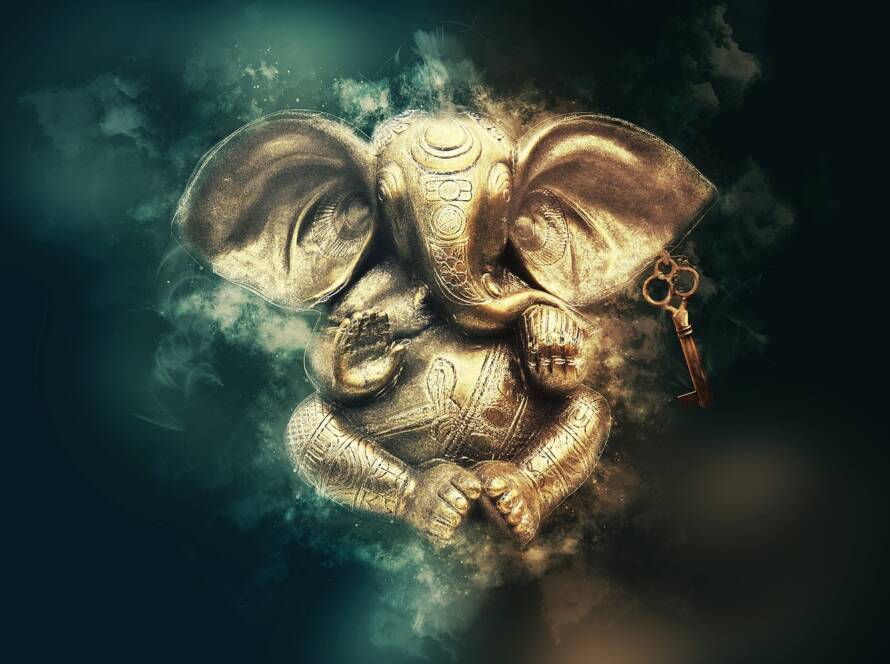In this article, we will explore the 7 stages of the spiritual path, all the way from the spiritual tourist, to the fully liberated Jivan Mukta. But first, we start with stage zero, with somebody who has no hint of spiritual aspiration; the socially spiritual person.
Stage 0 – Social Spirituality
At this stage, the individual has no real interest in spirituality, but they are interested in the social scene. Perhaps they go to church just so they can see their friends, or they go to Tantra workshops or ecstatic dance looking for casual hookups. A person at this stage will do no earnest spiritual practice. They may wear the perfect clothes to fit in, but there is no real spark of interest in their heart. This person can be compared to a seed wrapped in plastic – you can put them in the most fertile soil, and nothing will happen, They can sit next to the Buddha for a hundred years, and they will still retain their shell of ego. The hope for these individuals is that some small spark of spiritual aspiration starts to grow in their hearts. Hopefully, there is a lecture or a teacher that will touch some longing buried deep inside.
Stage 1 – The Spiritual Tourist
The spiritual tourist is a seed blowing in the wind. This seed hasn’t yet found the ground where it will settle. At this stage the individual starts to have an interest in spirituality – perhaps they read a really great book, they have an inspiring friend, or they had a life crisis that pushed them to search for answers. At this stage, the individual is checking out the spiritual market. To progress on the spiritual path, we must find a school that aligns with our structure. We all need to find our place. However, this stage shouldn’t last for too long. The danger is that a person at this stage will just take what pleases them from each tradition, and never be faced with anything that will really burn away their ego. Paul Brunton, the author of A Search in Secret India, is a good example of an earnest spiritual tourist. He met many masters and found many great schools, but was looking for the one that would set his heart alight. When he found it, he committed himself totally.
Stage 2 – The Devotee
The devotee is like a seed that finally hits the earth. They have found their place. They have found a school or master that resonates with them. The devotee still lives in the world and enjoys earthly pleasures, but they commit to weekly meetings with the teacher or regular classes, and they have some systematic spiritual practice. This individual is starting to have sparks of devotion and starting to gravitate around the spiritual path. The risk at this stage is that they will become very dogmatic and fanatical. This happens when devotion starts to arise without love being present in the heart. Religious wars were fought by these kinds of devotees. It happens in rare cases that a person still at this stage can become fully enlightened, purely through the intense love they have for their master.
Stage 3 – The Disciple
In the disciple, the seed is beginning to sprout. At this stage, the individual starts to have a real showdown with the ego. Their worldly life becomes small and their spiritual life starts to become of paramount importance. Some great disciples who are well known were Vivekananda, Milarepa, Swami Rama, and Peter and Paul. People at this stage start devoting more and more time to spiritual practice. They may move to a monastery, go to a cave, or live in an ashram. They want to give everything to the spiritual path, and they will be faced with some painful and intense transformations, as the ego starts to burn away. For coal to become a diamond it must undergo immense pressure. At this stage, the disciple will fight all of their demons and limitations, so that they can evolve into the image of perfection. The challenges at this stage are that a person can start to doubt the path, can become afraid, or can get burned out. It may feel like they are walking in an endless tunnel with no sign of the light.
Stage 4 – The Adept
For the adept, the sprout has come out of the earth and can see the daylight. They have made a very clear step from the ego to the soul. They are starting to embody this new reality. The personality of the adept is exceptional. They can begin to leverage a great intensity of focus in their journey toward enlightenment. All of their time will be devoted to spiritual practice. Their power means that they can have a great impact on the world. It is clear that they have drunk from the same well as the master. Ouspensky, a student of Gurdjieff, is a good example of an adept. An adept has a great capacity to understand the master, and can even act as a bridge, making the master’s teachings more accessible to the layperson. The risk at this stage is that a person can become very proud. They may start to see their master in a perverse way and feel like they want to be greater than their master. They may leave their spiritual master before attaining full liberation and start their own spiritual school because they want some acknowledgment or reward.
Stage 5 – The Initiate
In the initiate, the sprout has become a full-grown plant. For the initiate, every waking moment is a form of spiritual practice. As an example, they can be in erotic contact with the world all the time, and not just explore Eros during Tantric lovemaking. Gurdjieff and Rudolf Steiner are wonderful examples of initiates. The initiate has a big spiritual opening and paranormal powers that are way beyond the ordinary. They have a whole array of spiritual endowments. They have a constant awareness of the soul. A person at this level will have a great capacity to change the world and to move toward perfection. They start to have altered perceptions. They may experience time differently. They live in this great mystery and vast love. The risk at this stage is that the initiate may get stuck here and confuse it with enlightenment. This is where they need the guidance of a liberated master.
Stage 6 – The Siddha
Siddha means “perfected one”. At this stage, the plant is fully grown and is in bloom with a whole array of beautiful flowers. The soul is awakened and the individual radiates a great spiritual light. They can help the world immensely. They will not fall back on the path and it is only a matter of time until they reach total liberation. Some well known Siddha’s are Muktananda and Nityananda. The Siddha lives fully in the present moment but also lives in eternity. To the Siddha, there are no limits.
Stage 7 – The Jivan Mukta
Jivan Mukta means “liberated while living”. At this stage, the plant is in full bloom and is also united with the whole universe. This is the stage of total self-revelation. The individual is completely unshaking. Examples of Jivan Mukta’s are Ramakrishna, Milarepa, Maharishi, and Grieg. At this stage, the person lives permanently in eternity whilst they play at being in this world. God is completely driving the vehicle of their life. There is no risk of going backward. These individuals can uplift a whole nation or the whole world. They bring great balance to the earth. It is difficult or impossible to understand the perspective of a Jivan Mukta from our vantage point.
Transcribed and edited by Charlie Wilson from:



1 Comment
Abraham Simiyu
Its really good and I desire to know more plus scriptures involved